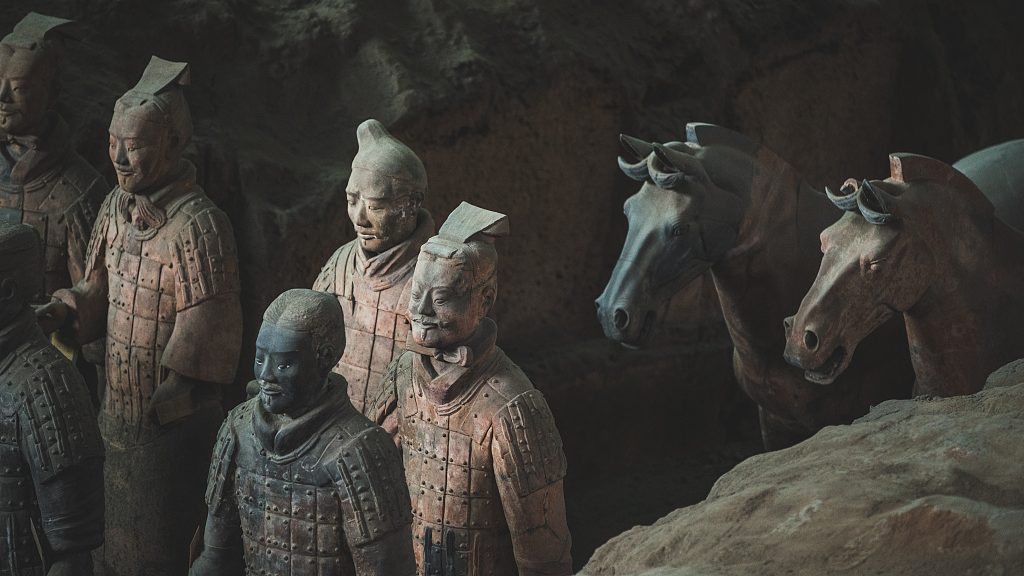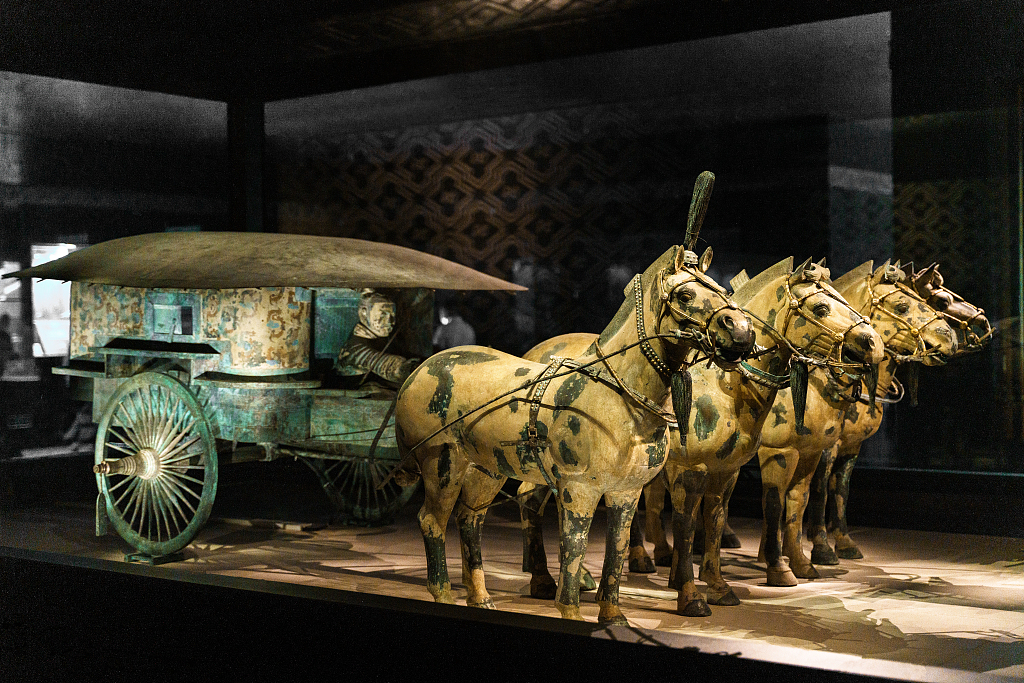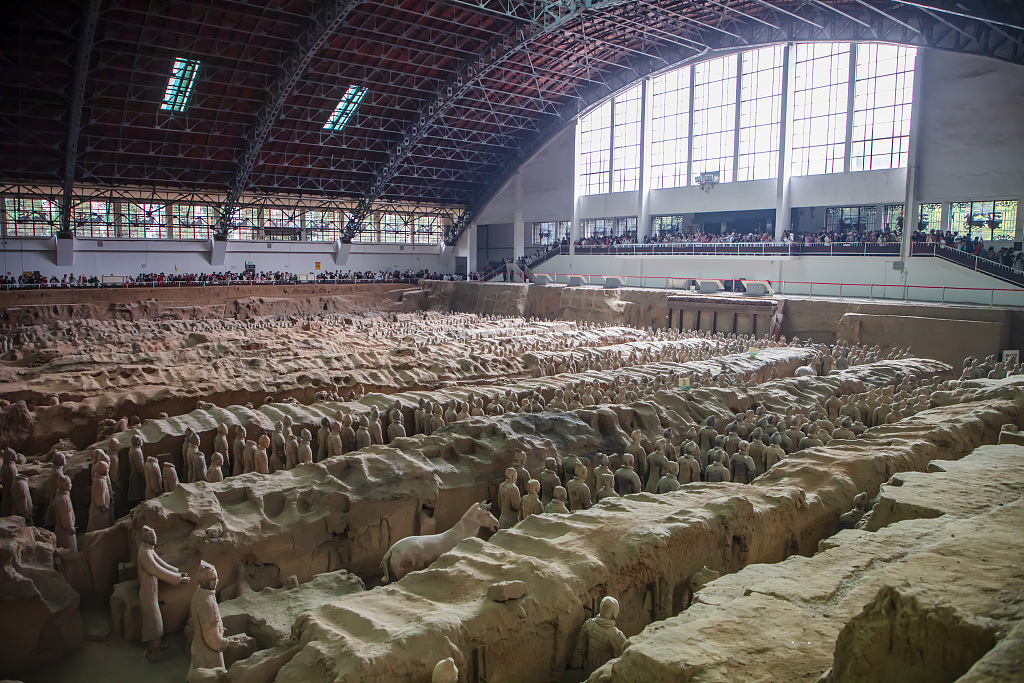
A close shot of the terracotta figurines reveals their varied appearances and lifelike details at Emperor Qinshihuang's Mausoleum Museum, Shaanxi Province, China. /CFP
A close shot of the terracotta figurines reveals their varied appearances and lifelike details at Emperor Qinshihuang's Mausoleum Museum, Shaanxi Province, China. /CFP
The Terracotta Army, hailed as one of the greatest discoveries of the 20th century, is a testament to China's millennia-old history and ancient civilization. As a form of funerary art, the terracotta sculptures depict the armies of Qin Shihuang, the First Emperor of the Qin Dynasty (221-206 BC).
But how were they discovered?
On March 29, 1974, in Xi Yang Village, Lintong County (now Lintong District), China's northwest Shaanxi Province, local farmers unearthed fragments of terracotta figurines while digging a well. On July 15 of the same year, an archaeological team led by Yuan Zhongyi arrived in the village with a plan to complete the excavation work within a week.
However, as the excavation began, the team members realized that the site beneath their feet seemed "boundless." The initial plan turned into a search that continued for several generations of archaeologists.
A close observation of the terracotta figurines reveals their varied appearances and lifelike details. The production techniques and intricate carvings of these large and finely crafted soldiers have been a significant subject of research and investigation for archaeologists over the years.

Bronze chariot and horse on display at Emperor Qinshihuang's Mausoleum Museum, Shaanxi Province, China /CFP
Bronze chariot and horse on display at Emperor Qinshihuang's Mausoleum Museum, Shaanxi Province, China /CFP
"We found that the general process involved creating large-scale clay models, followed by secondary refinement and detailed sculpting. During the production process, the craftsmen ingeniously resolved challenges such as finding the correct center of gravity, preventing clay from collapsing or deforming, and maintaining proper proportions," said Yuan Zhongyi.
The Terracotta Army represents the pinnacle of traditional clay sculpture techniques, enriched by innovative contributions from skilled artisans, leaving a profound impact on future generations.
In 1979, Emperor Qinshihuang's Mausoleum Museum was completed and opened to the public. Over the past 40 years, more than 100 million visitors from around the world, including over 200 foreign heads of state and government, have come to witness the grandeur of ancient Qin.

The view of Pit 1 at Emperor Qinshihuang's Mausoleum Museum, Shaanxi Province, China /CFP
The view of Pit 1 at Emperor Qinshihuang's Mausoleum Museum, Shaanxi Province, China /CFP
Visitors entering Emperor Qin Shihuang's Mausoleum Museum can not only see the restored Terracotta Army formation, the ongoing excavation and restoration work, but also appreciate the cultural relics through various technological displays.
Today, the excavation work continues. Since 2009, the third excavation of Pit 1, the largest pit, has yielded numerous significant archaeological findings. To date more than a thousand terracotta figures, horses, and weapons have been painstakingly unearthed and cleaned. The meticulous archaeological work aids experts in further unraveling the arrangement and deployment of the Qin army, allowing today's generation to catch a glimpse of how it helped to unify a nation.